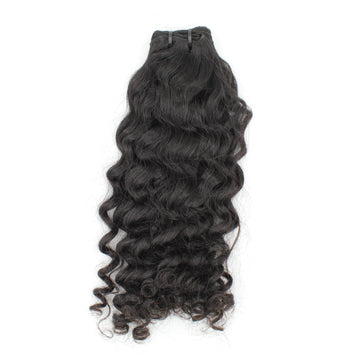GARA BLOG
A Comprehensive Guide to Wig Types, Weights, and Hair Grades

Wigs have been around for centuries and have been used for various purposes, from covering bald patches due to medical conditions to fashion statements. With technology and innovation, wigs have become more advanced, and now there are several types, weights, and hair grades available to choose from. Whether you are new to wigs or a seasoned pro, understanding the differences between wig types, weights, and hair grades can help you make an informed decision on selecting the perfect wig. In this blog post, we will be exploring closure wig, frontal wig, weights, and hair grades.
Blog Body:
Types of Wigs:
The two most popular wig types are closure wigs and frontal wigs. Closure wigs are wigs that have a closure at the crown area, providing the illusion of a natural-looking scalp. On the other hand, frontal wigs have a wider coverage at the front. While closure wigs are ideal for those who want an affordable and easy-to-wear option, frontal wigs and can be customized to fit your preferred style.
Wig Weights:
The weight of a wig is important for comfort, and it varies depending on the material used and the hair gathered to make the wig. Wig manufacturers use grams to measure the weight of a wig, and the most common wig weights are 110 grams, 150 grams, 250 grams, and 300 grams. If you prefer lightweight wigs, 110-150 grams wigs are perfect for you. For those who prefer wigs with more volume, wigs weighing 250-300 grams will give you the desired look.
Hair Grades:
The grade of hair used to make a wig is also an important factor to consider. The two main hair grades are single donor hair and virgin Indian hair. Single donor hair, also known as South Indian temple hair, is hair collected from a single donor, ensuring that the cuticles are all in one direction, giving the hair a more natural look and making it easier to style. On the other hand, virgin Indian hair is collected from multiple donors, and while it has a high quality, it may not be as uniform as single donor hair.
Maintenance:
After choosing the type of wig, weight, and hair grade you need, maintenance is also essential. To maintain your wig, you need to use a gentle shampoo, a wig conditioner, and you should avoid using hot tools. Also, storing your wig in a wig stand or a mannequin head will help maintain its shape and extend its lifespan.
Choosing the Right Wig:
Choosing the right wig can be overwhelming, especially if you are new to the world of wigs. The best way to select the right wig is to consider your budget, your hair goals, and the occasion. Whether you want a wig for a special event, a casual day out, or medical purposes, there is an ideal wig type, weight, and hair grade for you.
Conclusion:
Wigs have become an integral part of fashion and hair care. With different types, weights, and hair grades, there is a wig for everyone. In this blog post, we highlighted closure wigs, frontal wigs, wig weights, hair grades, maintenance, and choosing the right wig. Remember to consider your budget, hair goals, and the occasion when choosing the perfect wig. With this guide, we hope you can make an informed decision on selecting the perfect wig.




